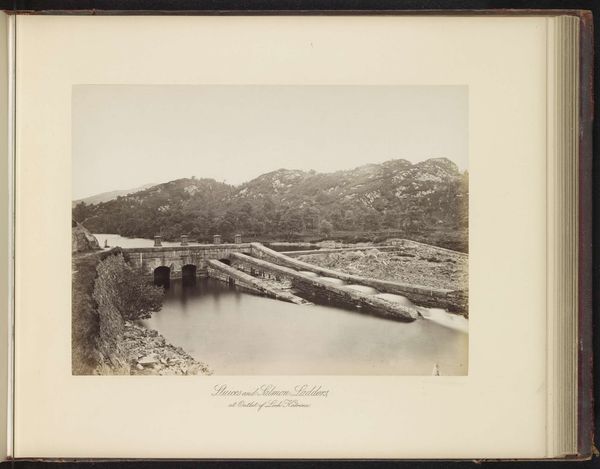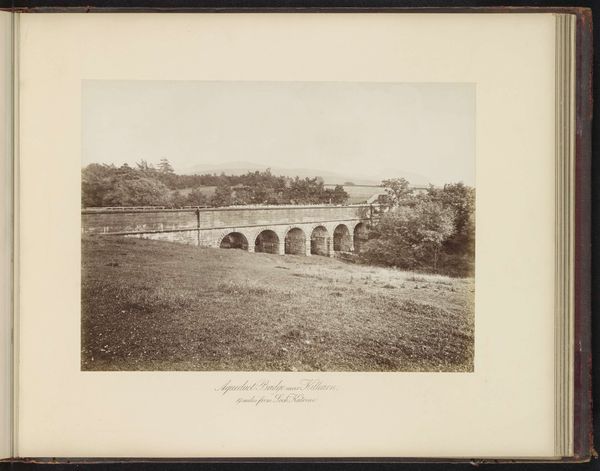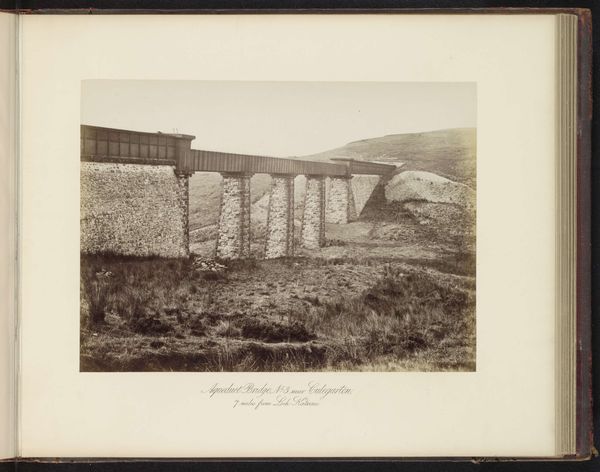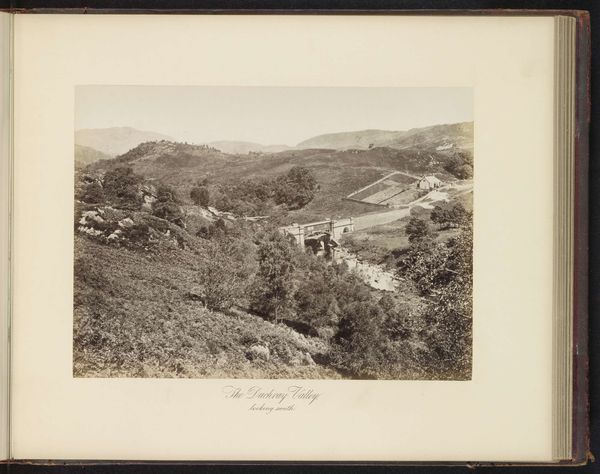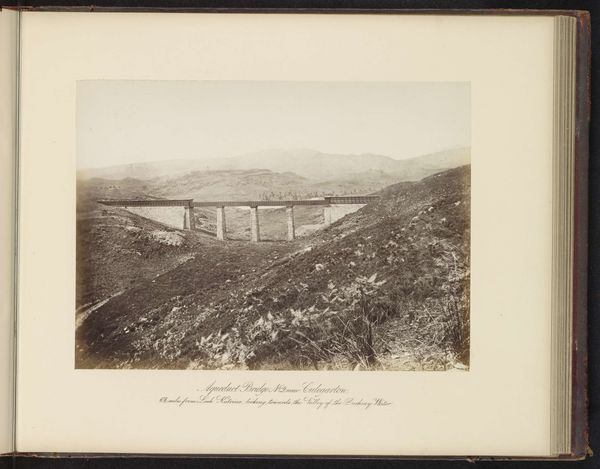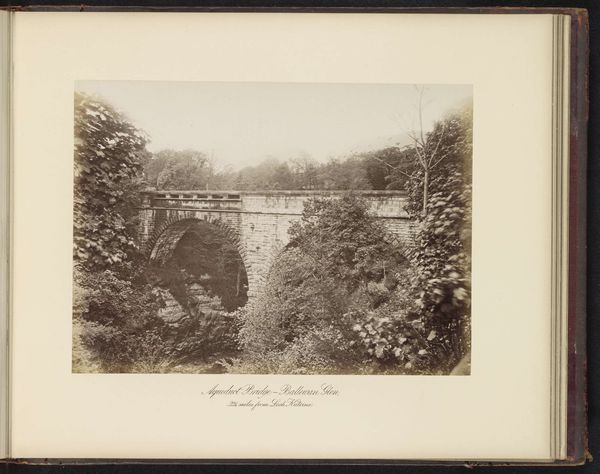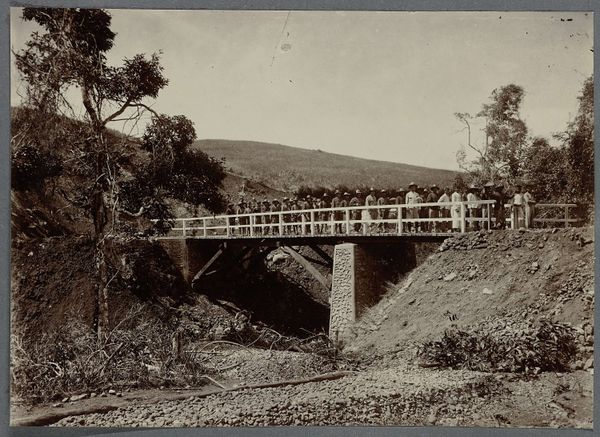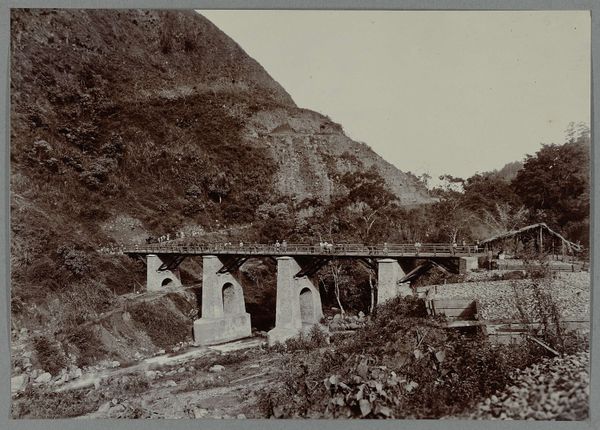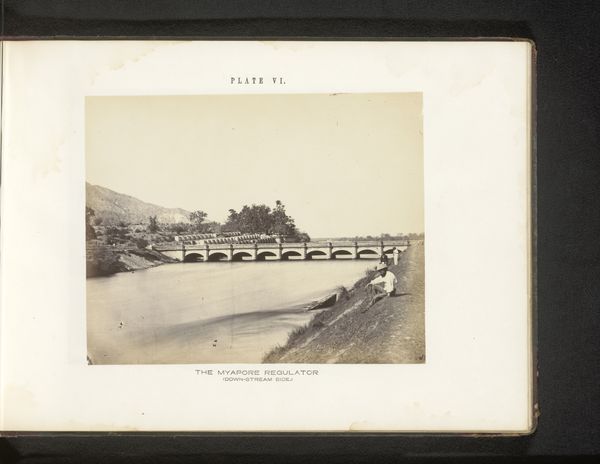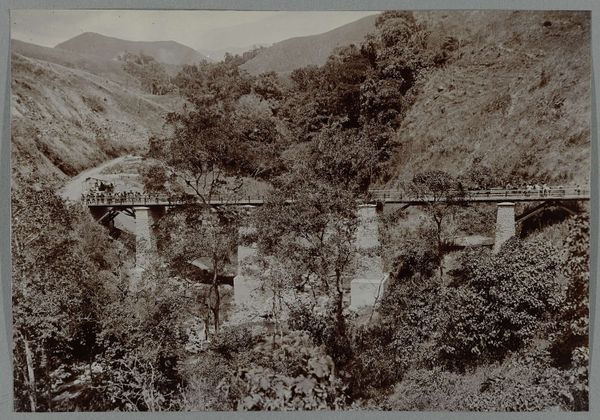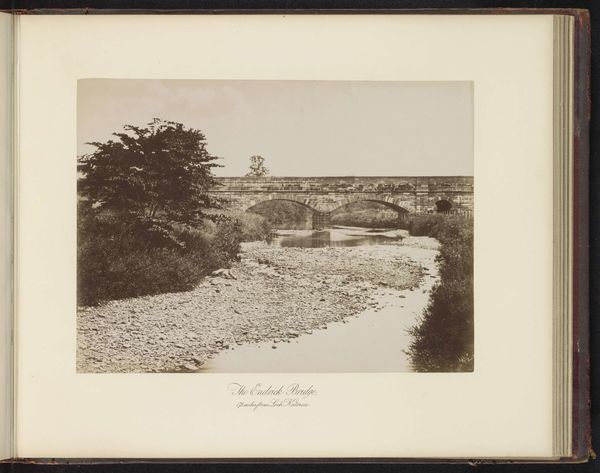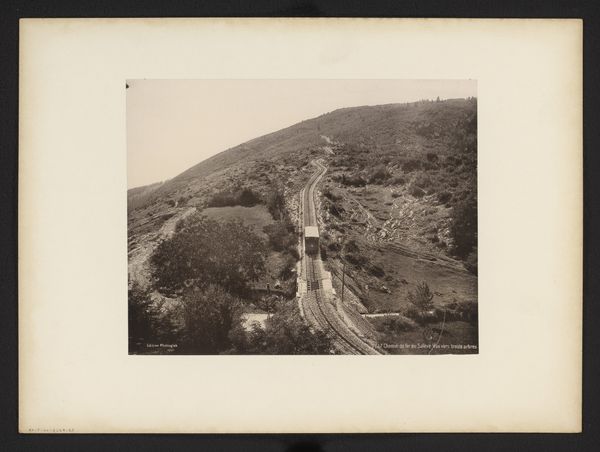
photography
#
landscape
#
photography
Dimensions: height 203 mm, width 279 mm
Copyright: Rijks Museum: Open Domain
Editor: Here we have "The Duchray Bridge, 7 1/2 miles from Loch Katrine," a photograph taken before 1889 by T. & R. Annan & Sons. It's a very crisp, detailed landscape, but also seems quite… industrial. What do you see in this piece? Curator: What strikes me is the tension between nature and industry that the image captures. The bridge, a clear sign of human intervention, is juxtaposed against the wild, untamed landscape of the Scottish Highlands. How does this interplay speak to the moment in history when it was created, do you think? Editor: I hadn't really considered the historical context. I suppose the late 19th century was a time of rapid industrialization. So, you’re suggesting that this photograph might be making a comment about the impact of industrial progress on the natural world? Curator: Exactly. Consider also the political dimension. The Scottish Highlands experienced significant social and economic changes during this era. Land clearances, urbanization, and emigration dramatically reshaped the landscape and the lives of its people. How might the bridge symbolize both connection and disruption in that context? Editor: I guess it could be interpreted as both. Connecting communities, but also disrupting the traditional way of life. So the bridge is a physical link, but also a symbol of larger societal shifts. Curator: Precisely. And the photograph itself? Doesn't it also represent a certain perspective? Think about who had access to photography at this time, and whose stories were being told, or left untold. Editor: That’s a really interesting point. I hadn't thought about the power dynamics inherent in who gets to represent a landscape. I’m beginning to see this image in a whole new light! Curator: Hopefully this inspires you to think more critically about the intersection of art, history, and society, and to question the narratives embedded in visual representations.
Comments
No comments
Be the first to comment and join the conversation on the ultimate creative platform.
